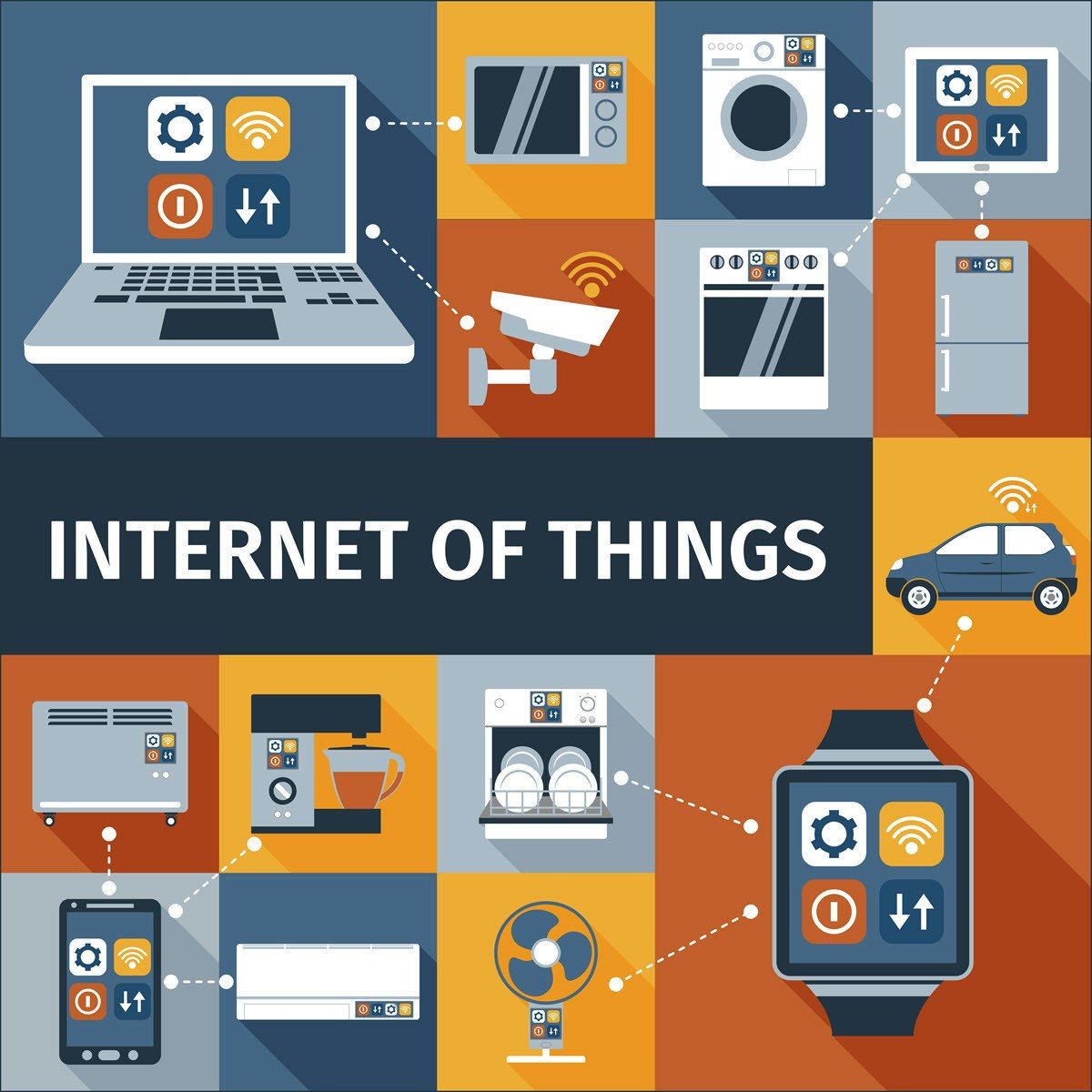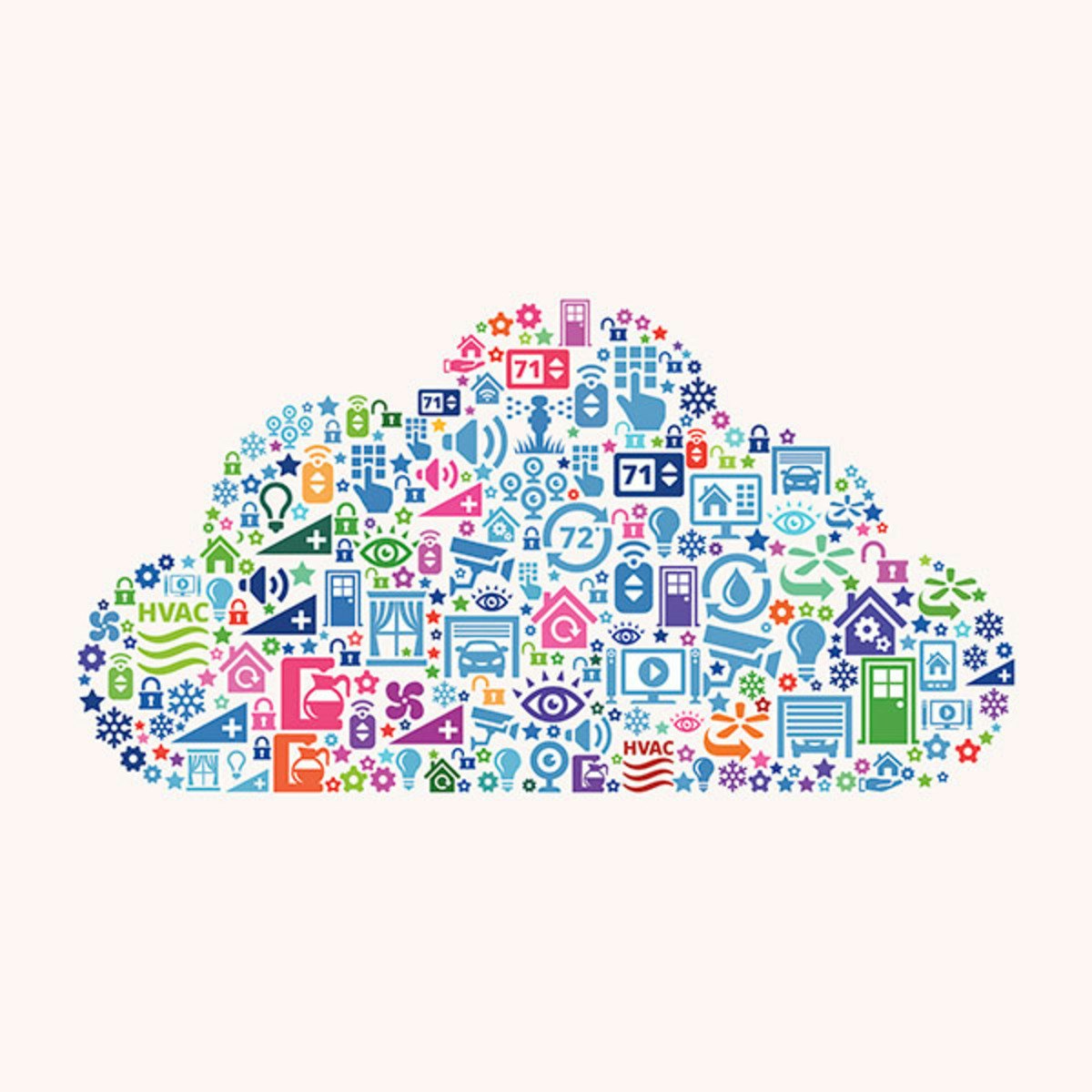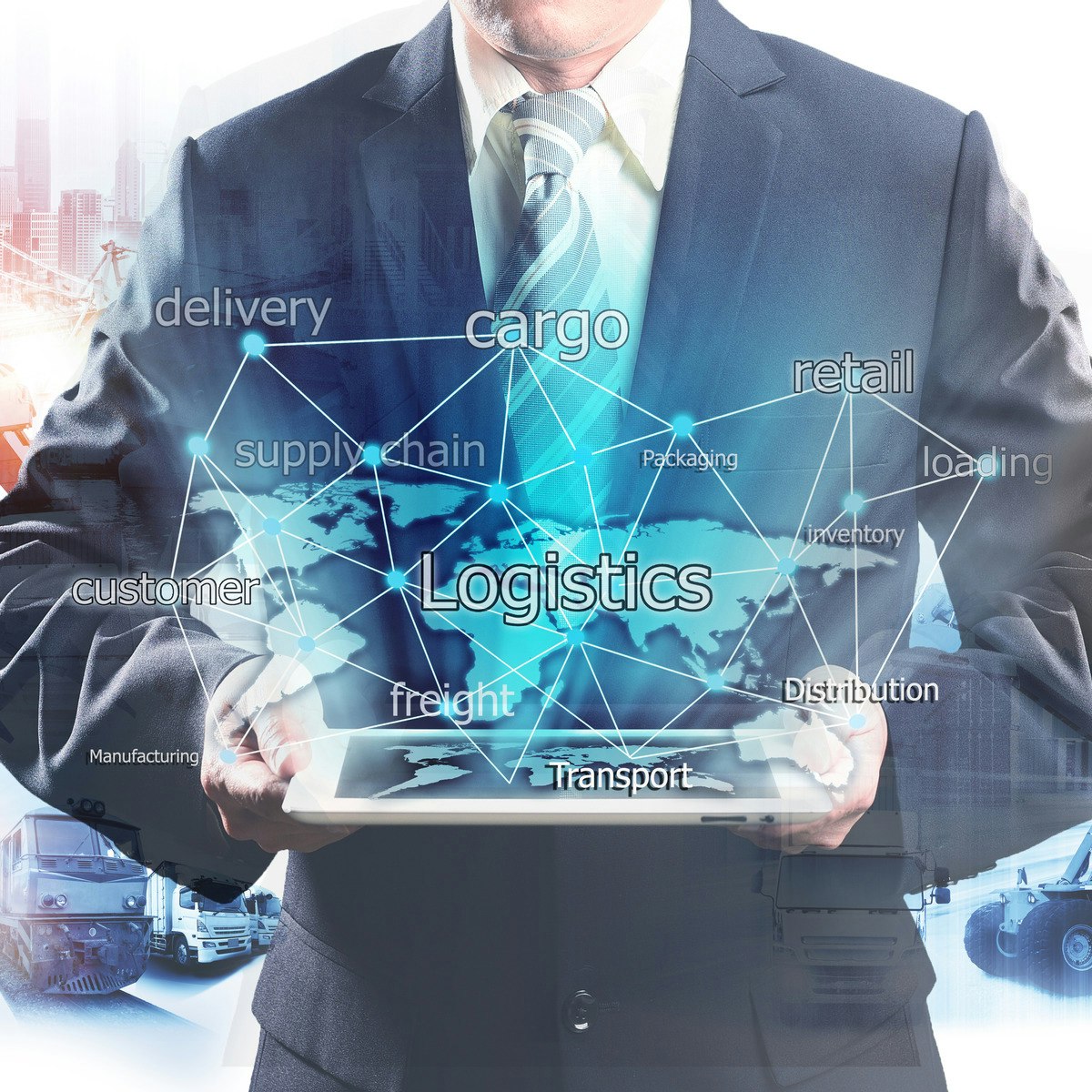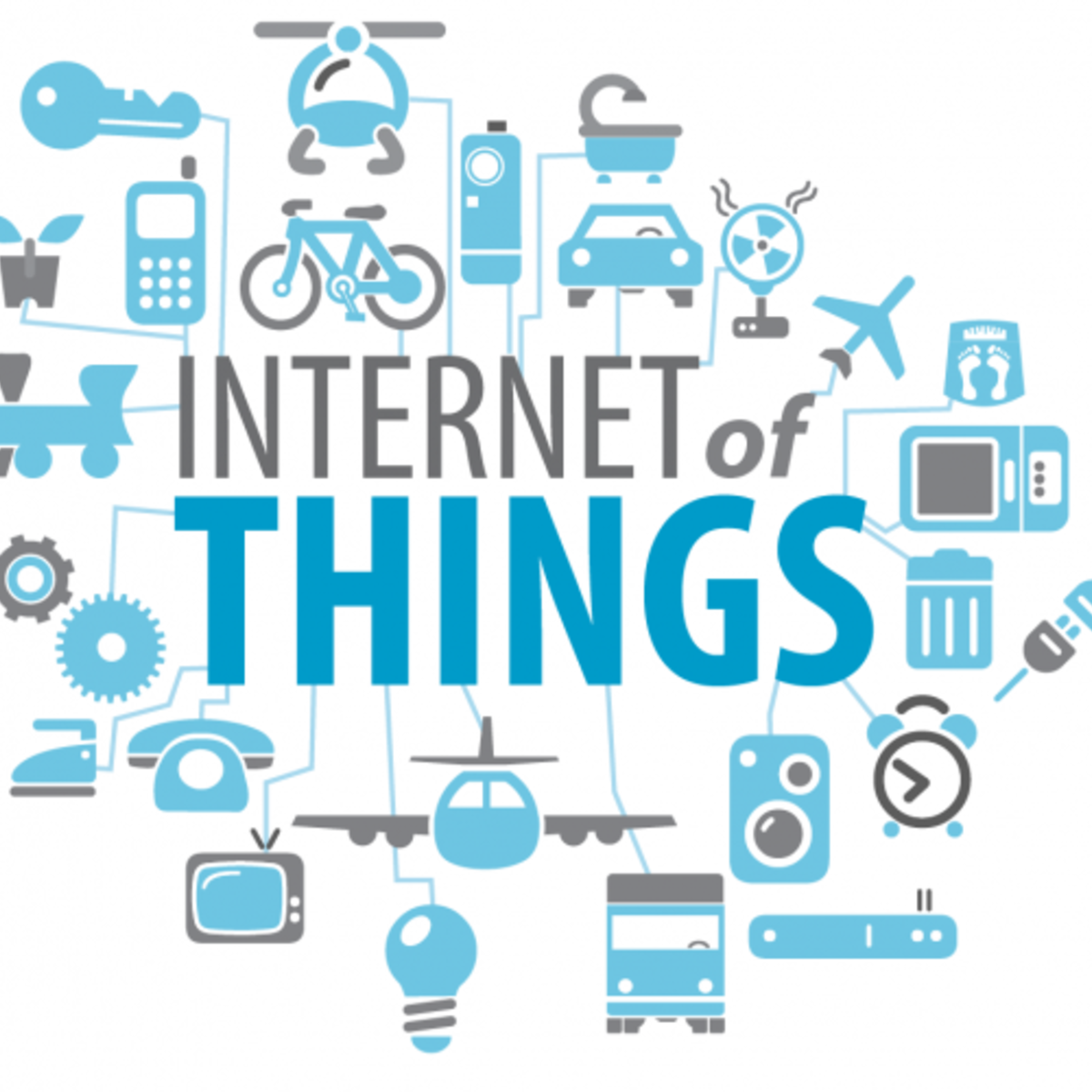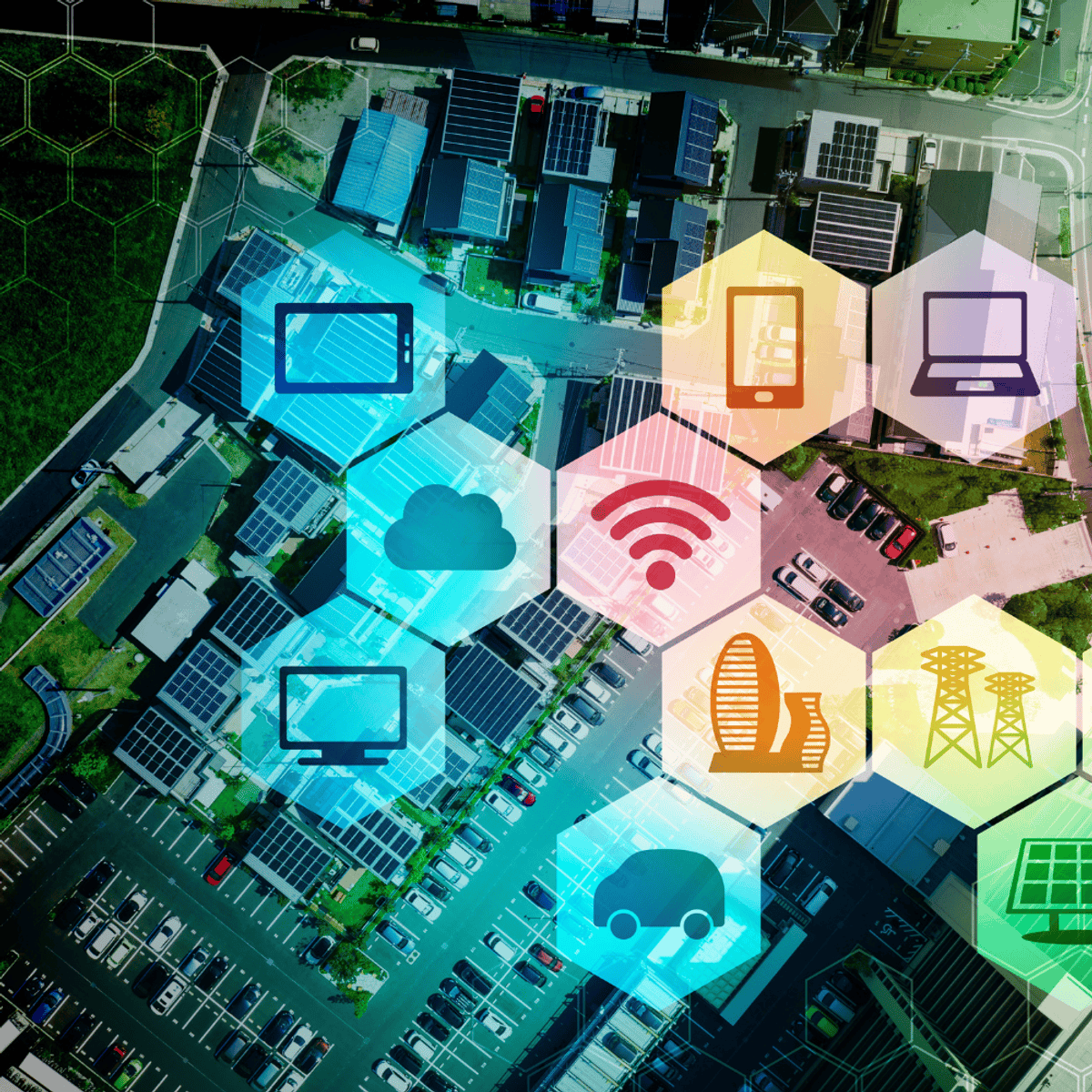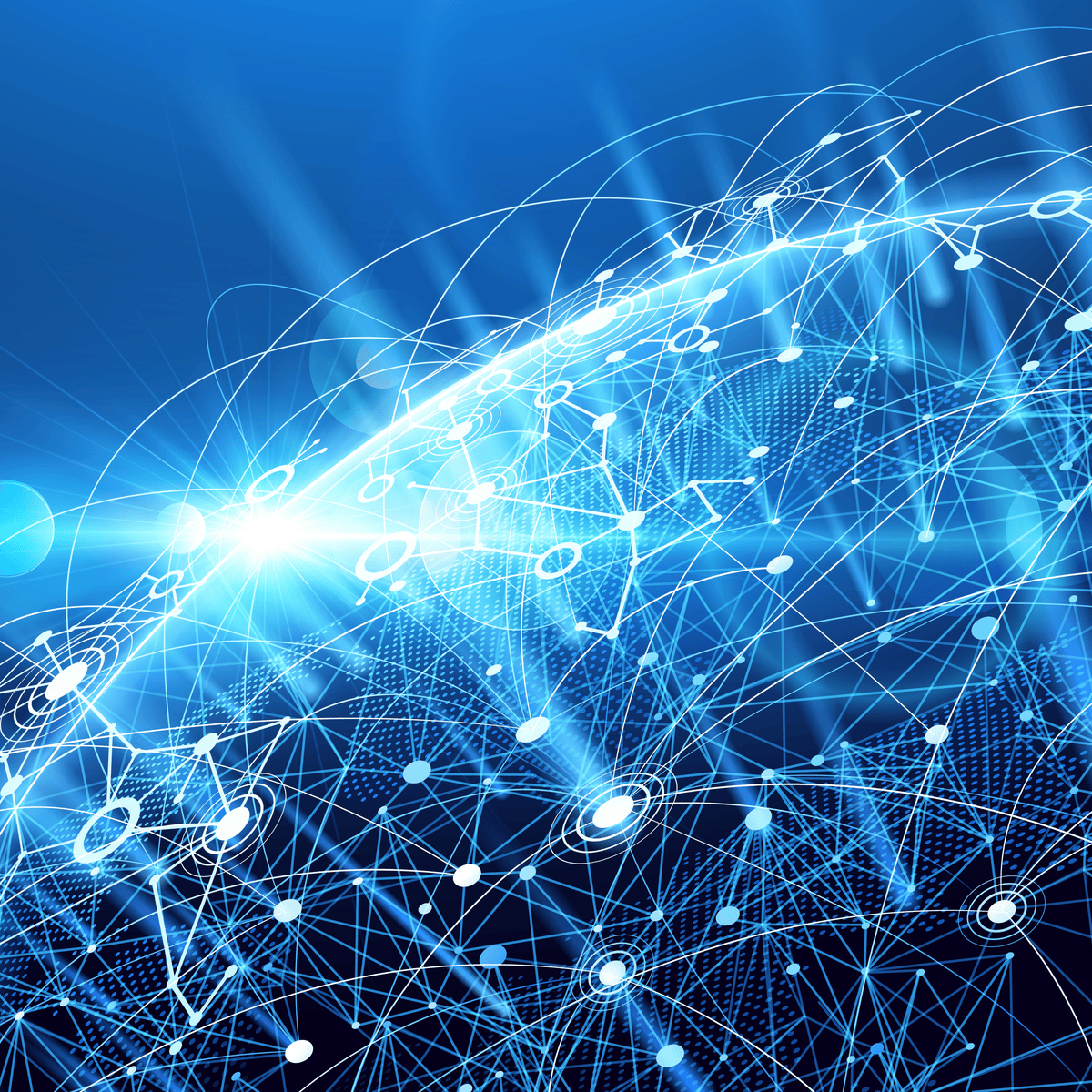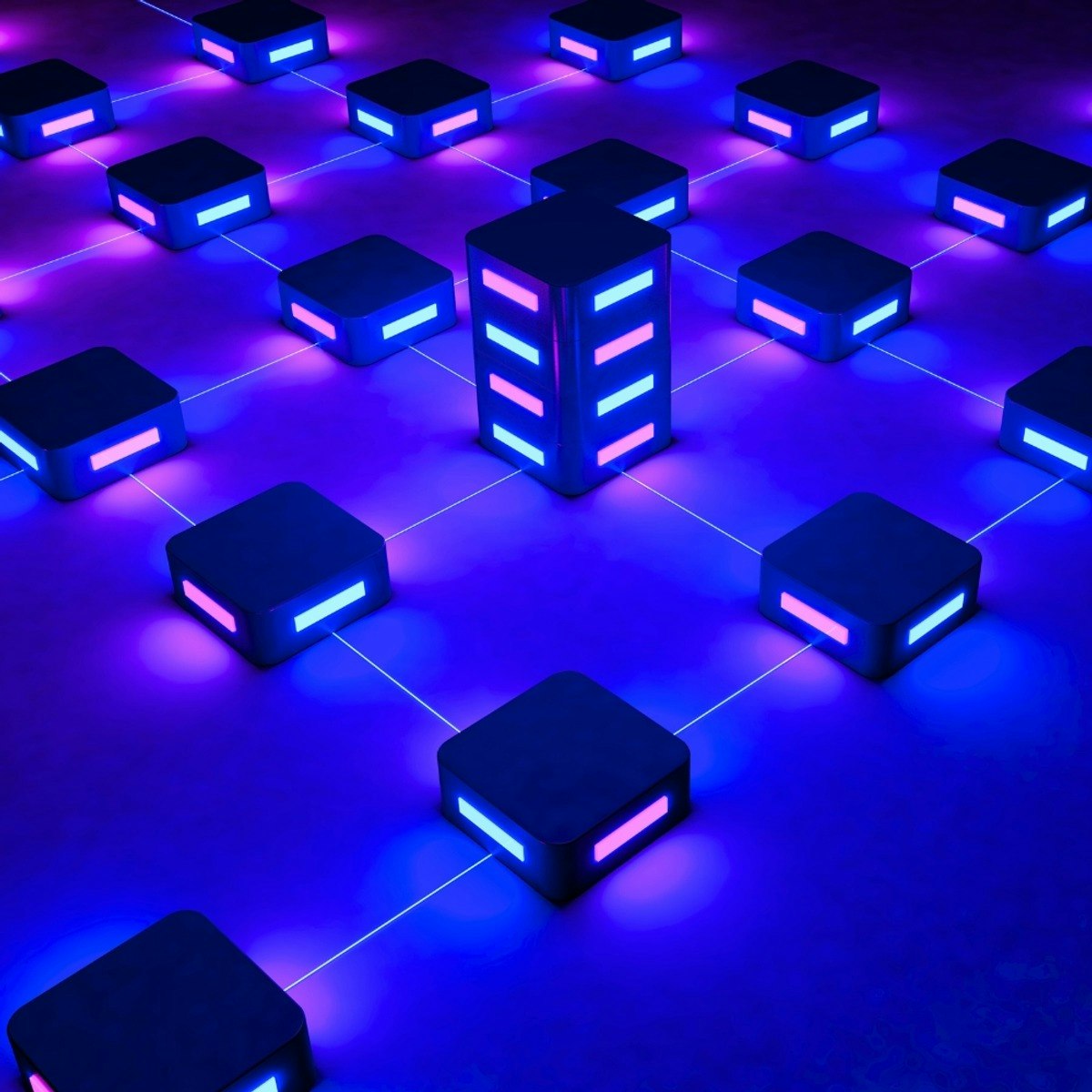Internet of Things
vigating the Network: An Introduction to the Internet of Things
The Internet of Things, or IoT, describes a network of physical objects—"things"—that are embedded with sensors, software, and other technologies for the purpose of connecting and exchanging data with other devices and systems over the internet or other communication networks. At its core, IoT is about extending internet connectivity beyond traditional devices like computers and smartphones to a vast range of everyday objects, enabling them to collect data, communicate, and perform actions. This interconnectedness opens up a world of possibilities, from smart homes that anticipate your needs to industrial machinery that predicts its own maintenance requirements.
Working in the field of IoT can be incredibly engaging. Imagine designing systems that make cities smarter and more efficient, or developing wearable devices that empower individuals to take control of their health. The ability to bridge the physical and digital worlds, creating solutions that have a tangible impact on how we live and work, is a significant draw for many. Furthermore, the constant evolution of IoT technologies means it's a field ripe with innovation and opportunities to be at the forefront of technological advancement.
Introduction to Internet of Things
The Internet of Things (IoT) is fundamentally changing how we interact with the world around us. It refers to the vast and growing network of physical devices, vehicles, home appliances, and other items embedded with electronics, software, sensors, actuators, and connectivity which enables these objects to connect and exchange data. This seamless communication can occur between the devices themselves or between devices and the cloud. The goal is to create a more integrated and intelligent world where everyday objects can provide information, automate tasks, and improve efficiency.
Definition and core concepts of IoT
At its heart, the Internet of Things involves three main components: the "things" themselves (physical devices), the network that connects them, and the systems that collect, process, and analyze the data generated by these things. These "things" are often equipped with sensors to gather information about their surroundings or internal state, and actuators that allow them to perform actions based on the data they receive or process.
The data collected by IoT devices is transmitted over various communication networks, ranging from Wi-Fi and Bluetooth for short-range communication to cellular and satellite networks for longer distances. This data is often sent to cloud platforms for storage and analysis, where powerful computing resources can be leveraged to extract meaningful insights. These insights can then be used to trigger automated actions, provide alerts, or inform decision-making processes.
A key concept in IoT is the idea of "smart" devices. These aren't just connected devices; they possess a degree of intelligence, allowing them to perform tasks autonomously or adapt to changing conditions. This intelligence is often powered by embedded software and, increasingly, by artificial intelligence (AI) and machine learning algorithms that enable devices to learn from data and improve their performance over time.
These introductory courses can help build a solid understanding of what IoT is and its fundamental principles.
You may also find these books helpful for a broader overview.
Historical evolution and key milestones
While the term "Internet of Things" was coined by Kevin Ashton in 1999, the concept of interconnected devices has a longer history. Early explorations into connecting devices to networks can be traced back to the 1980s, with an internet-connected Coke vending machine at Carnegie Mellon University often cited as one of the first IoT devices. This machine allowed programmers to check its status remotely to see if cold drinks were available.
The 1990s saw further developments, including John Romkey's internet-connected toaster, demonstrated in 1990. Tim Berners-Lee's invention of the World Wide Web in 1989 and the subsequent commercialization of the internet in the early 1990s laid crucial groundwork. Ashton's initial vision for IoT revolved around using Radio-Frequency Identification (RFID) technology to connect physical objects to the internet for supply chain management.
The true explosion of IoT began in the late 2000s and early 2010s. Cisco Systems estimated that IoT was "born" between 2008 and 2009, when the number of connected "things" surpassed the number of people connected to the internet. This growth was fueled by several converging factors: the proliferation of smartphones, the rise of cloud computing, the decreasing cost and increasing power of sensors and embedded systems, and advancements in wireless communication technologies. Milestones include LG's announcement of the first internet refrigerator in 2000 and the launch of Google's Nest smart thermostat in 2011.
For those interested in how we arrived at today's IoT landscape, these resources offer valuable insights.
Significance in modern technology ecosystems
The Internet of Things has become a cornerstone of modern technology ecosystems, driving innovation and transformation across countless industries. Its significance lies in its ability to bridge the physical and digital worlds, enabling a new level of automation, efficiency, and data-driven decision-making. Businesses are increasingly adopting IoT to optimize operations, reduce costs, enhance customer experiences, and create new revenue streams. McKinsey estimates that 83% of businesses leveraging IoT see substantial improvements in productivity.
In our daily lives, IoT manifests in smart homes with connected appliances, wearable fitness trackers, and connected cars that offer enhanced safety and convenience. In broader society, IoT is a key enabler of smart cities, improving services like traffic management, public safety, and resource allocation. It plays a critical role in healthcare for remote patient monitoring and in agriculture for precision farming.
The vast amounts of data generated by IoT devices are a valuable asset, fueling advancements in artificial intelligence and machine learning. This data allows for predictive analytics, enabling businesses to anticipate issues like equipment failure or shifting market demands. As technologies like 5G and edge computing mature, the capabilities and reach of IoT are expected to expand even further, making it an increasingly integral part of our technological future.
To understand the broader impact and significance of IoT, consider exploring these resources.
Key Technologies and Components
Understanding the Internet of Things requires a grasp of its fundamental building blocks. These technologies and components work in concert to enable the collection, transmission, processing, and actioning of data from the physical world. From the tiny sensors gathering information to the complex cloud platforms analyzing it, each element plays a crucial role in the functionality of an IoT system.
Sensors, actuators, and embedded systems
At the very edge of the IoT ecosystem are sensors and actuators. Sensors are devices that detect and respond to some type of input from the physical environment. This input could be light, heat, motion, moisture, pressure, or any number of other environmental phenomena. Essentially, sensors convert physical parameters into electrical signals that can be understood by other devices. Examples include temperature sensors in a smart thermostat, motion detectors in a security system, or GPS sensors in a vehicle tracking device.
Actuators, on the other hand, are responsible for taking action in the physical world based on the data received or processed. They are the "movers" in an IoT system. When a smart thermostat detects the room is too cold (via its sensor), an actuator might trigger the heating system to turn on. Other examples include smart locks that engage or disengage, valves that open or close in an industrial process, or a robotic arm that moves an object on an assembly line.
Both sensors and actuators are typically part of embedded systems. An embedded system is a combination of computer hardware and software designed for a specific function or functions within a larger system. In the context of IoT, these are often microcontrollers or microprocessors with integrated memory and input/output peripherals, all designed to be small, power-efficient, and cost-effective. These systems run the software that manages the sensor data, communicates with the network, and controls the actuators. The development of increasingly powerful and affordable embedded systems has been a key driver in the growth of IoT.
These courses provide a good foundation in the hardware and embedded systems aspects of IoT.
For those looking to dive deeper into embedded systems, this book is a valuable resource.
Communication protocols (e.g., MQTT, Zigbee)
Once data is collected by sensors, or when an actuator needs to be controlled, communication is essential. IoT devices use a variety of communication protocols to exchange information. These protocols define the rules and formats for data transmission and can be broadly categorized based on their range, power consumption, and data rate.
For short-range communication, protocols like Bluetooth Low Energy (BLE) and Zigbee are common. BLE is designed for very low power consumption, making it suitable for battery-operated devices like wearables and smart home sensors. Zigbee is another low-power, low-data-rate wireless protocol often used in home automation and industrial control systems due to its mesh networking capabilities, which allow devices to relay data for each other, extending the network's range and reliability.
For longer-range communication, especially when devices need to connect directly to the internet or a central server, protocols like MQTT (Message Queuing Telemetry Transport) and CoAP (Constrained Application Protocol) are prevalent. MQTT is a lightweight publish/subscribe messaging protocol designed for connections with remote locations where a small code footprint is required or network bandwidth is limited. It's widely used in IoT for its efficiency and reliability. CoAP is another protocol designed for constrained devices and networks, often used in machine-to-machine (M2M) applications. Cellular technologies (like 4G LTE and 5G) and Low-Power Wide-Area Networks (LPWANs) such as LoRaWAN and NB-IoT also play a crucial role in providing connectivity over larger distances.
Understanding these communication technologies is key for any IoT professional.
This book offers a comprehensive look at various IoT protocols and standards.
Cloud computing and edge computing integration
The massive amounts of data generated by IoT devices need to be stored, processed, and analyzed. This is where cloud computing plays a pivotal role. Cloud platforms offer scalable and cost-effective solutions for handling IoT data. They provide the infrastructure for data storage, powerful processing capabilities for analytics and machine learning, and tools for managing and securing IoT deployments. Major cloud providers offer specialized IoT services that simplify device connection, data ingestion, and application development.
However, relying solely on the cloud can introduce challenges related to latency, bandwidth consumption, and data privacy. For applications requiring real-time responses or operating in environments with limited connectivity, edge computing offers a complementary solution. Edge computing involves processing data closer to where it is generated—at or near the "edge" of the network—rather than sending it all to a centralized cloud. This can be on the IoT device itself or on a local gateway device.
By processing data locally, edge computing can significantly reduce latency, minimize the amount of data that needs to be transmitted to the cloud (saving bandwidth and costs), and enhance privacy by keeping sensitive data localized. Often, a hybrid approach is used, where initial data processing and time-sensitive actions occur at the edge, while more complex analysis and long-term storage happen in the cloud. The integration of cloud and edge computing provides a flexible and powerful architecture for diverse IoT applications.
These courses explore the role of cloud services in IoT architectures.
For further reading on how cloud technologies support IoT, consider this book.
Applications Across Industries
The versatility of IoT technology has led to its adoption across a wide array of industries, transforming traditional processes and enabling entirely new business models and services. From optimizing city services to revolutionizing healthcare and agriculture, IoT applications are making a tangible impact globally. The ability to collect real-time data from the physical world and act upon it offers unprecedented opportunities for efficiency, innovation, and improved quality of life.
Smart cities and urban planning
IoT is a foundational technology for the development of smart cities. By embedding sensors and connected devices throughout urban infrastructure, cities can gather data on everything from traffic flow and energy consumption to air quality and waste management. This data enables city planners and administrators to make more informed decisions, optimize resource allocation, and improve the quality of life for citizens.
For instance, smart traffic management systems can adjust traffic light timings in real-time based on traffic conditions, reducing congestion and travel times. Smart grids can optimize energy distribution and reduce waste, while smart lighting systems can dim streetlights when no one is present, saving energy. IoT-enabled waste management systems can alert sanitation departments when bins are full, optimizing collection routes and reducing operational costs. Furthermore, environmental sensors can monitor pollution levels, providing valuable data for public health initiatives. The integration of IoT in urban planning facilitates more responsive, efficient, and sustainable city operations.
These courses explore the application of IoT in creating smarter urban environments.
This book delves into how IoT is shaping the cities of the future.
Healthcare and wearable devices
The impact of IoT in the healthcare sector is profound, leading to more personalized, proactive, and efficient patient care. Wearable devices, such as smartwatches and fitness trackers, are a prominent example, allowing individuals to monitor their activity levels, heart rate, sleep patterns, and other vital signs in real-time. This data can empower users to make healthier lifestyle choices and can also be shared with healthcare providers for a more comprehensive understanding of a patient's health status.
Beyond consumer wearables, medical-grade IoT devices enable remote patient monitoring, which is particularly beneficial for managing chronic conditions and for patients in remote areas. Connected medical devices, like glucose monitors, blood pressure cuffs, and smart inhalers, can transmit patient data directly to healthcare professionals, allowing for timely interventions and adjustments to treatment plans. In hospitals, IoT can improve asset tracking (e.g., locating medical equipment), optimize workflows, and enhance patient safety through smart beds that monitor movement and vital signs. The ability to collect continuous health data through IoT is paving the way for more predictive and preventative healthcare approaches.
These resources discuss the role of IoT in health and wellness.
Agriculture and supply chain optimization
IoT is revolutionizing the agriculture industry, enabling what is often referred to as "smart farming" or "precision agriculture." By deploying sensors in fields, farmers can gather detailed data on soil moisture, nutrient levels, weather conditions, and crop health. This information allows for more precise application of water, fertilizers, and pesticides, leading to increased yields, reduced resource consumption, and more sustainable farming practices. Drones equipped with cameras and sensors can survey large areas of land, identifying issues like pest infestations or irrigation problems early on. IoT can also be used for livestock monitoring, tracking animal health, location, and behavior.
In supply chain and logistics, IoT provides unprecedented visibility and control. RFID tags and GPS trackers attached to goods and shipping containers allow companies to monitor their location and condition (e.g., temperature for perishable goods) in real-time throughout the entire supply chain. This enhances efficiency, reduces losses due to spoilage or theft, and improves delivery predictability. In warehouses, IoT can automate inventory management and optimize the movement of goods. The data collected from IoT devices in the supply chain can also be used to identify bottlenecks and areas for improvement, leading to more resilient and efficient operations.
These courses touch upon IoT applications in industrial settings, including agriculture and logistics.
For a deeper dive into agricultural IoT, this book is a good starting point.
Security and Privacy Challenges
As the Internet of Things expands, connecting billions of devices and collecting vast amounts of data, security and privacy have emerged as critical concerns. The interconnected nature of IoT systems creates new vulnerabilities that malicious actors can exploit, and the data generated by these devices often includes sensitive personal information. Addressing these challenges is paramount to building trust and ensuring the safe and ethical adoption of IoT technologies.
Common vulnerabilities in IoT devices
IoT devices are often susceptible to a range of vulnerabilities. Many devices are designed with a primary focus on functionality and cost-effectiveness, sometimes leading to security being an afterthought. Common vulnerabilities include weak, guessable, or hardcoded passwords, which make it easy for attackers to gain unauthorized access. Insecure network services running on devices can also provide entry points for attackers.
Another significant issue is the lack of regular security updates or patch management for many IoT devices. Once a vulnerability is discovered, it may not be promptly fixed, leaving devices exposed for extended periods. Insecure data transfer and storage, where data is not properly encrypted either in transit or at rest, can lead to data breaches. Furthermore, some devices may have insecure interfaces, such as web or mobile applications used to control them, which can be exploited if not properly secured. The sheer number and diversity of IoT devices also make it challenging to implement and manage consistent security measures across an entire ecosystem.
These courses specifically address the security aspects of IoT.
These books provide in-depth knowledge about IoT security vulnerabilities and countermeasures.
Data encryption and authentication methods
To mitigate security risks, robust data encryption and authentication methods are essential in IoT systems. Encryption protects data confidentiality by converting it into an unreadable format (ciphertext) that can only be deciphered with a specific decryption key. Data should be encrypted both in transit (while it's being transmitted between devices, gateways, and the cloud) and at rest (when it's stored on devices or servers). Various encryption algorithms, such as AES (Advanced Encryption Standard), are used for this purpose.
Authentication is the process of verifying the identity of a user, device, or system. Strong authentication mechanisms ensure that only authorized entities can access IoT devices and data. This can involve using unique device identifiers, digital certificates, and secure protocols for mutual authentication, where both the device and the server verify each other's identity. Multi-factor authentication (MFA), which requires more than one form of verification, can add an extra layer of security for accessing IoT management platforms and sensitive data. Implementing secure key management practices is also crucial, as the security of encryption and authentication often depends on the secrecy and integrity of cryptographic keys.
This book provides a focused look at identity management in IoT, a key aspect of authentication.
Regulatory frameworks (e.g., GDPR)
The proliferation of IoT devices and the data they collect has prompted the development of regulatory frameworks aimed at protecting user privacy and ensuring data security. One of the most significant regulations is the General Data Protection Regulation (GDPR) in the European Union. While GDPR is not specific to IoT, its principles directly apply to any IoT system that processes the personal data of EU residents. GDPR mandates requirements for data consent, data minimization (collecting only necessary data), data subject rights (such as the right to access or delete one's data), and data breach notifications.
Other regions and countries are also implementing their own data privacy and cybersecurity regulations that impact IoT. For example, the California Consumer Privacy Act (CCPA) grants consumers certain rights over their personal information. Industry-specific regulations, such as those in healthcare (e.g., HIPAA in the United States), also impose strict requirements on how IoT devices and data are managed. Navigating this complex and evolving regulatory landscape is a significant challenge for IoT developers and deployers, requiring careful attention to legal and compliance obligations.
Understanding the legal and ethical dimensions is crucial when working with IoT data.
Career Opportunities in IoT
The rapid expansion of the Internet of Things has created a burgeoning job market with diverse opportunities for skilled professionals. As more businesses and industries adopt IoT technologies, the demand for individuals who can design, develop, implement, and manage these complex systems continues to grow. Whether you are a student exploring career paths, a job seeker looking for new opportunities, or a professional considering a career change, the IoT field offers exciting prospects for growth and innovation.
The IoT market is projected to reach $1.39 trillion by 2026, indicating significant ongoing investment and job creation. This growth spans various sectors, including manufacturing, healthcare, retail, smart cities, and agriculture, each with unique needs and applications for IoT.
Roles: IoT developer, solutions architect, data analyst
The IoT landscape encompasses a variety of specialized roles. An IoT Developer is typically involved in programming the software and firmware that runs on IoT devices, as well as developing the applications that interact with these devices. This can include embedded systems programming, mobile app development, and cloud application development.
An IoT Solutions Architect takes a higher-level view, designing the end-to-end architecture of IoT systems. This involves selecting the appropriate hardware, communication protocols, cloud platforms, and security measures to meet specific business or technical requirements. They ensure all components integrate seamlessly and the system is scalable, reliable, and secure.
An IoT Data Analyst focuses on making sense of the vast amounts of data generated by IoT devices. They use statistical tools and machine learning techniques to identify trends, extract insights, and build predictive models. These insights can then be used to optimize processes, improve products, or create new services. Other roles in the IoT space include IoT Security Engineer, Network Engineer, Hardware Engineer, and Project Manager.
For those aspiring to specific roles, OpenCourser offers curated paths and resources.
Key technical and soft skills required
Success in an IoT career requires a blend of technical and soft skills. On the technical side, proficiency in programming languages such as Python, C/C++, and Java is often essential, particularly for developers. Understanding hardware, including sensors, microcontrollers, and embedded systems, is crucial for many roles. Networking knowledge, including familiarity with various communication protocols (MQTT, CoAP, Zigbee, LoRaWAN) and network security, is also vital.
Experience with cloud computing platforms (like AWS IoT, Azure IoT, or Google Cloud IoT) and data analytics tools is increasingly important, especially for roles involving data management and analysis. Cybersecurity skills, including understanding common vulnerabilities and security best practices, are in high demand across all IoT roles. Familiarity with Artificial Intelligence (AI) and Machine Learning (ML) concepts is also becoming a significant advantage as these technologies are increasingly integrated with IoT.
Beyond technical skills, strong problem-solving and analytical abilities are critical for troubleshooting issues and designing effective solutions. Good communication skills are necessary for collaborating with team members, understanding client requirements, and explaining complex technical concepts to non-technical stakeholders. Adaptability and a willingness to learn are also key, as the IoT field is constantly evolving with new technologies and trends.
This book provides a practical approach to developing IoT solutions.
Emerging niches (e.g., industrial IoT, smart home tech)
Within the broader IoT field, several specialized niches are experiencing significant growth and offer unique career opportunities. Industrial IoT (IIoT) focuses on applying IoT technologies in manufacturing, energy, transportation, and other industrial sectors. This involves connecting machinery, sensors, and control systems to optimize production processes, enable predictive maintenance, improve worker safety, and enhance supply chain efficiency. Professionals in IIoT often require a deep understanding of industrial automation systems and operational technologies (OT) in addition to core IoT skills. You can explore more about Industrial Engineering and its intersection with IoT.
Smart Home Technology is another rapidly expanding niche, focusing on consumer-facing IoT devices and systems that automate and enhance the home environment. This includes smart thermostats, lighting systems, security cameras, voice assistants, and connected appliances. Careers in this area may involve hardware design, mobile app development, user interface (UI) and user experience (UX) design, and ensuring interoperability between different smart home ecosystems.
Other emerging areas include connected healthcare, smart agriculture, automotive IoT (including connected and autonomous vehicles), and smart city solutions. Each of these niches presents specific challenges and requires specialized knowledge, offering diverse pathways for IoT professionals to develop expertise and make an impact.
These courses and resources can help you explore some of these specialized areas.
Educational Pathways
Embarking on a career in the Internet of Things requires a solid educational foundation. Fortunately, there are multiple pathways to acquire the necessary knowledge and skills, catering to different learning preferences, career goals, and existing educational backgrounds. Whether you prefer a traditional university setting, the flexibility of online learning, or hands-on project-based experiences, you can find a route that suits your needs. Understanding these options can help you make informed decisions about your learning journey into the world of IoT.
For those looking to pivot into IoT or upskill, online courses offer a flexible and often more direct route to acquiring specific IoT competencies. OpenCourser's Learner's Guide provides valuable insights into making the most of online learning, including how to earn an online course certificate and effectively add it to your professional profiles.
University degrees (e.g., computer science, electrical engineering)
A traditional university degree can provide a strong and comprehensive foundation for a career in IoT. Disciplines such as Computer Science are highly relevant, offering in-depth knowledge of software development, data structures, algorithms, networking, and database management—all critical for building and managing IoT systems. You can explore various Computer Science courses and programs on OpenCourser.
Electrical Engineering is another excellent pathway, focusing on hardware design, sensor technology, embedded systems, and communication systems. This background is particularly valuable for roles involving the design and development of IoT devices themselves. Many universities are also beginning to offer specialized degrees or concentrations in IoT, robotics, or embedded systems, which provide a more targeted curriculum.
A bachelor's degree is often the minimum requirement for many entry-level IoT positions, particularly in engineering roles. Advanced degrees, such as a Master's or Ph.D., can open doors to more specialized research, development, and leadership positions. These formal education programs typically offer a structured learning environment, access to faculty expertise, and opportunities for research and collaboration.
Consider these courses for a taste of university-level IoT education.
Online certifications (e.g., Coursera, edX)
Online certifications offer a flexible and often more focused way to gain IoT skills. Platforms like Coursera and edX, among others, host a wide range of courses and specialization programs developed by universities and industry experts. These certifications can be particularly beneficial for individuals looking to upskill in specific IoT domains, supplement an existing degree, or transition into the IoT field from a different background.
Online courses can cover topics from introductory IoT concepts to advanced areas like IoT security, cloud integration for IoT, and specific IoT development platforms. Many programs emphasize practical skills and may include hands-on labs or projects. Certifications can demonstrate a commitment to continuous learning and can be valuable additions to a resume, helping to showcase specific competencies to potential employers. They can also be a more cost-effective and time-efficient way to acquire specialized knowledge compared to a full degree program.
OpenCourser makes it easy to browse through thousands of online courses, including many focused on IoT and related technologies. You can save courses to a list using the "Save to list" feature and compare options to find the best fit for your learning goals. For those on a budget, checking the OpenCourser Deals page can help find offers on relevant courses.
Here are some examples of comprehensive online programs available.
Hands-on projects and hackathons
Regardless of whether you pursue a formal degree or online certifications, gaining hands-on experience is crucial for a career in IoT. Theoretical knowledge is important, but employers highly value practical skills and the ability to apply concepts to real-world problems. Building personal projects is an excellent way to develop these skills and create a portfolio to showcase your abilities.
Start with simple projects using development boards like Raspberry Pi or Arduino, and gradually move to more complex systems involving multiple sensors, cloud connectivity, and data analysis. Participating in hackathons or IoT-focused competitions can also provide valuable experience, allowing you to collaborate with others, work under pressure, and develop innovative solutions in a short timeframe. These activities not only enhance your technical skills but also help develop problem-solving, teamwork, and communication abilities.
Many online courses incorporate hands-on projects. OpenCourser's "Activities" section on course pages often suggests projects that can be done before, during, or after a course to reinforce learning. Creating a structured curriculum for yourself, as outlined in the OpenCourser Learner's Guide, can help you incorporate project-based learning effectively.
These capstone projects and hands-on courses are designed to provide practical experience.
This book focuses on practical projects using Arduino.
Ethical and Societal Implications
The pervasive nature of the Internet of Things, with its ability to collect vast amounts of data and influence physical systems, brings forth significant ethical and societal considerations. While IoT offers immense benefits, it also raises concerns about privacy, data ownership, potential biases in automated systems, and environmental impact. Acknowledging and proactively addressing these implications is crucial for fostering responsible innovation and ensuring that IoT technologies are developed and deployed in a way that benefits society as a whole.
Data ownership and user consent
A fundamental ethical challenge in IoT revolves around data ownership and user consent. IoT devices can collect a wealth of data, often personal and sensitive, about individuals' behaviors, preferences, and environments. Questions arise about who owns this data: the user, the device manufacturer, the service provider, or other third parties? Clear policies and transparent communication are needed to define data ownership rights.
Obtaining meaningful user consent for data collection and processing is also critical, especially in light of regulations like GDPR. Users should be clearly informed about what data is being collected, how it will be used, with whom it might be shared, and for how long it will be retained. Consent mechanisms should be easy to understand and manage, allowing users to make informed choices and to withdraw consent if they wish. The complexity of IoT ecosystems, with data potentially flowing through multiple devices and platforms, can make achieving true transparency and informed consent challenging.
These books explore the legal and ethical dimensions of data in the digital age.
Environmental impact of IoT devices
The proliferation of billions of IoT devices also raises concerns about their environmental impact. The manufacturing of these devices consumes resources and energy, and often involves materials that can be harmful if not disposed of properly. The relatively short lifespan of some consumer electronics, including certain IoT devices, contributes to the growing problem of electronic waste (e-waste).
Furthermore, the energy consumption of IoT devices themselves, as well as the data centers and networks that support them, can be significant. While IoT can also be used to promote environmental sustainability (e.g., through smart grids that optimize energy use or precision agriculture that reduces resource waste), it is important to consider the entire lifecycle environmental footprint of IoT deployments. Efforts towards designing more durable and recyclable devices, using sustainable materials, and optimizing energy efficiency are crucial to mitigate the negative environmental consequences of a hyper-connected world.
This course touches on environmental management in the context of modern industry, which is relevant to IoT's impact.
Bias in AI-driven IoT systems
As Artificial Intelligence (AI) becomes increasingly integrated with IoT systems, the potential for bias in AI-driven decision-making is a significant ethical concern. AI algorithms learn from data, and if the data used to train these algorithms reflects existing societal biases (e.g., related to race, gender, or socioeconomic status), the AI systems can perpetuate or even amplify these biases.
In the context of IoT, biased AI could lead to unfair or discriminatory outcomes in various applications. For example, a biased facial recognition system in a smart city security application might disproportionately misidentify individuals from certain demographic groups. An AI-powered recruitment tool that analyzes data from IoT-enabled workplace monitoring could inadvertently discriminate against certain candidates. Ensuring fairness, transparency, and accountability in AI-driven IoT systems requires careful attention to data collection practices, algorithm design, testing, and ongoing monitoring to detect and mitigate bias.
Understanding the intersection of AI and IoT is key to addressing these challenges.
Future Trends and Innovations
The Internet of Things is a dynamic and rapidly evolving field, with ongoing advancements continually shaping its trajectory and expanding its capabilities. Several key trends and innovations are poised to significantly influence the future of IoT, promising even more intelligent, interconnected, and efficient systems. Keeping abreast of these developments is crucial for anyone involved in or aspiring to a career in IoT.
AI and machine learning integration
The integration of Artificial Intelligence (AI) and Machine Learning (ML) with IoT is arguably one of the most transformative trends. This convergence, often referred to as AIoT (Artificial Intelligence of Things), moves beyond simple data collection and remote control to enable devices and systems that can learn, adapt, and make autonomous decisions. ML algorithms can analyze the vast streams of data generated by IoT sensors to identify patterns, predict future events (like equipment failure or changes in consumer behavior), and optimize operations in real-time.
AI enhances IoT capabilities by enabling features like natural language processing for voice-controlled devices, computer vision for smart surveillance and quality control, and sophisticated analytics for personalized experiences. As AI models become more powerful and efficient, they can be deployed directly on edge devices, allowing for faster local processing and reduced reliance on cloud connectivity. This deeper integration of AI and ML is unlocking new levels of automation, efficiency, and intelligence across all sectors where IoT is applied.
These courses and resources explore the powerful combination of AI and IoT.
5G and low-power networks
Advancements in communication technologies are critical enablers for the future of IoT. The rollout of 5G networks promises significantly higher data speeds, lower latency (reduced delay), and greater capacity to connect a massive number of devices simultaneously compared to previous cellular generations. These characteristics are vital for demanding IoT applications like autonomous vehicles, real-time industrial automation, and immersive augmented/virtual reality experiences. 5G's ability to handle vast data volumes reliably will further support the growth of data-intensive IoT solutions.
Alongside 5G, Low-Power Wide-Area Networks (LPWANs) continue to be essential for many IoT use cases. Technologies like LoRaWAN, Sigfox, and NB-IoT (Narrowband IoT) are designed specifically for IoT devices that require long-range communication, low bandwidth, and extended battery life—often lasting several years on a single battery. These networks are ideal for applications like smart metering, environmental monitoring, and asset tracking, where devices may be deployed in remote or hard-to-reach locations and transmit small amounts of data infrequently. The evolution and integration of both high-speed 5G and energy-efficient LPWANs will provide a versatile connectivity landscape for the diverse needs of future IoT deployments.
This course provides insights into the future of 5G technology.
Decentralized IoT architectures (e.g., blockchain)
Traditional IoT architectures often rely on centralized cloud platforms for data processing and management. However, there is a growing interest in decentralized IoT architectures, which offer potential benefits in terms of security, privacy, resilience, and cost-efficiency. Technologies like blockchain are being explored as a means to create more distributed and trustworthy IoT systems.
Blockchain, with its inherent characteristics of immutability, transparency (for public blockchains), and decentralized consensus, can provide a secure and auditable way to record transactions and data exchanges between IoT devices. This can enhance data integrity and enable trusted interactions without relying on a central intermediary. For example, blockchain could be used to manage device identities, secure data sharing in supply chains, or facilitate peer-to-peer energy trading in smart grids. While challenges related to scalability and energy consumption of some blockchain implementations still need to be addressed for widespread IoT adoption, decentralized approaches hold promise for creating more robust and user-centric IoT ecosystems.
This course touches upon blockchain in the context of emerging technologies.
These books delve into the intersection of blockchain and IoT.
Frequently Asked Questions (Career Focus)
Navigating a career in the Internet of Things can bring up many questions, especially for those new to the field or considering a transition. This section aims to address some common queries to provide clarity and guidance as you explore your options in this dynamic and growing industry.
What skills are most in demand for IoT roles?
The most in-demand skills for IoT roles often blend software, hardware, networking, and data expertise. Programming languages like Python, C++, and Java are foundational for developing the software that powers IoT devices and applications. Understanding embedded systems, microcontrollers, and sensors is crucial for hardware-focused roles.
Strong knowledge of networking protocols (e.g., MQTT, CoAP, Zigbee, LoRaWAN) and network architecture is vital for ensuring devices can communicate effectively. As IoT generates massive datasets, skills in data analytics, big data technologies, and cloud computing platforms (like AWS IoT, Azure IoT, Google Cloud IoT) are highly sought after. Furthermore, with the increasing connectivity of devices, cybersecurity skills to protect IoT systems from threats are paramount. Increasingly, familiarity with Artificial Intelligence (AI) and Machine Learning (ML) is becoming a significant advantage, as these technologies are used to derive insights and enable intelligent automation in IoT systems.
These courses can help you build some of the most in-demand technical skills.
This book provides a broad overview of the technologies involved.
How do entry-level IoT positions differ across industries?
Entry-level IoT positions can vary significantly depending on the industry. In manufacturing (Industrial IoT), an entry-level role might focus on supporting the deployment and maintenance of sensors on production lines, collecting data for predictive maintenance, or working with industrial control systems. This might involve more hands-on hardware interaction and understanding of operational technology (OT).
In the smart home technology sector, an entry-level developer might work on mobile applications that control smart devices, firmware for new consumer gadgets, or testing the interoperability of different home automation products. The focus here might be more on user experience and consumer-facing software.
In healthcare, an entry-level position could involve assisting with the setup and management of remote patient monitoring systems, ensuring data from wearable devices is securely transmitted and stored, or supporting the IT infrastructure for connected medical equipment. Data privacy and regulatory compliance (like HIPAA) would be key considerations. In agriculture, entry-level roles might involve deploying and managing sensor networks in fields or analyzing data related to crop health or environmental conditions. Generally, regardless of the industry, entry-level roles will involve learning the specific applications and challenges of IoT within that sector, often under the guidance of more senior engineers or specialists.
Can IoT certifications replace formal degrees?
Whether IoT certifications can replace formal degrees is a nuanced question. For many engineering-heavy roles, particularly in hardware design or complex system architecture, a formal degree in computer science, electrical engineering, or a related field is often preferred or even required by employers. A degree provides a broad theoretical foundation and in-depth knowledge that can be critical for these positions.
However, IoT certifications can be highly valuable, especially for demonstrating specialized skills in specific technologies, platforms, or areas like IoT security or cloud integration. For individuals who already have a degree in a different field and are looking to transition into IoT, or for those seeking to upskill in specific areas, certifications can be an excellent way to gain targeted knowledge and validate their expertise. In some cases, particularly for more software-focused or entry-level roles, a strong portfolio of projects and relevant certifications might be sufficient to secure a position, especially if the candidate can demonstrate practical skills and a passion for the field. Ultimately, the "best" path often involves a combination of foundational education (whether a degree or robust self-study) and targeted certifications, complemented by hands-on experience.
OpenCourser offers a wide array of IoT certification courses that can help you specialize.
What industries are hiring IoT professionals?
A wide range of industries are actively hiring IoT professionals due to the transformative potential of connected technologies. The manufacturing sector is a major employer, with the push towards Industry 4.0 and smart factories driving demand for IIoT specialists. Technology companies themselves, from large enterprises like Google, AWS, IBM, and Cisco to innovative startups, are constantly seeking IoT talent to develop new hardware, software, and platforms.
The healthcare industry is increasingly adopting IoT for remote patient monitoring, smart medical devices, and hospital management, creating roles for IoT engineers and data analysts. Automotive companies are hiring for connected car development and autonomous driving initiatives. The retail sector uses IoT for smart inventory management, supply chain optimization, and enhancing customer experiences. Furthermore, areas like smart cities (urban planning, public utilities), agriculture (precision farming), and energy (smart grids) are also significant sources of IoT employment. As IoT adoption continues to expand, opportunities are likely to emerge in even more diverse sectors.
You can explore careers in some of these key industries on OpenCourser.
How does IoT impact remote work opportunities?
The Internet of Things can have a mixed impact on remote work opportunities. On one hand, many IoT development roles, particularly those focused on software development, cloud architecture, data analysis, and project management, can often be performed remotely. The tools and collaborative platforms available today allow distributed teams to work effectively on these aspects of IoT projects.
However, some IoT roles inherently require an on-site presence. For instance, IoT hardware engineers who are designing, testing, and assembling physical devices, or field technicians responsible for installing and maintaining IoT deployments in industrial settings, smart cities, or agricultural environments, will typically need to be physically present where the "things" are. Similarly, roles involving the direct management of physical infrastructure or hands-on troubleshooting of deployed systems may not be fully remote.
Despite this, IoT itself can enable more effective remote management and monitoring of physical assets and processes, which can, in turn, support remote work for other functions within an organization. For example, an operations manager might be able to remotely monitor a factory's performance thanks to IIoT, even if the maintenance engineers on site are not remote.
What are the challenges for IoT entrepreneurs?
While the IoT field offers immense opportunities, entrepreneurs looking to start ventures in this space also face several significant challenges. One major hurdle is security and privacy. Building secure IoT products and services from the ground up is complex and crucial, as any vulnerability can have serious consequences and damage user trust. Ensuring compliance with evolving data privacy regulations also adds to this complexity.
Interoperability and standardization can be another challenge. The IoT ecosystem is fragmented, with numerous devices, platforms, and communication protocols. Ensuring that a new product or service can seamlessly integrate with existing systems can be difficult. Scalability is also a key consideration; designing solutions that can scale to support a large number of devices and users requires careful planning and robust architecture.
Hardware development and manufacturing can be capital-intensive and involve long lead times, especially for startups. Managing supply chains, component sourcing (which can be affected by global shortages), and quality control are significant operational challenges. Finally, market adoption and differentiation can be tough in a rapidly evolving and sometimes crowded market. Entrepreneurs need to clearly identify a problem their IoT solution solves and effectively communicate its value proposition to customers.
These courses might be helpful for aspiring entrepreneurs in the tech space.
Conclusion
The Internet of Things is more than just a technological trend; it is a fundamental shift in how we interact with the physical and digital worlds. Its capacity to connect everyday objects, gather vast amounts of data, and enable intelligent automation is reshaping industries, creating new economic opportunities, and changing the way we live and work. From the sensors and actuators at the edge to the powerful cloud platforms and AI algorithms that drive insights, IoT encompasses a diverse and rapidly evolving ecosystem of technologies.
For those considering a path in IoT, the journey offers both exciting prospects and notable challenges. The demand for skilled professionals is strong and growing across numerous sectors, with diverse roles available for those with the right blend of technical expertise in hardware, software, networking, data analytics, and cybersecurity, complemented by crucial soft skills like problem-solving and communication. Educational pathways are varied, ranging from traditional university degrees to flexible online courses and certifications, all ideally supplemented by hands-on project experience.
However, the field also requires a keen awareness of the ethical and societal implications, including data privacy, security vulnerabilities, potential biases in AI-driven systems, and environmental impact. Navigating these complexities responsibly is paramount. As IoT continues to mature, driven by innovations in AI, 5G, and decentralized architectures, it promises a future of even greater connectivity and intelligence. Whether you aspire to be an IoT developer, architect, data scientist, or entrepreneur, a commitment to continuous learning and a proactive approach to tackling challenges will be key to success in this transformative field. The journey into the Internet of Things is one of constant discovery and innovation, offering a chance to build a truly connected future.



